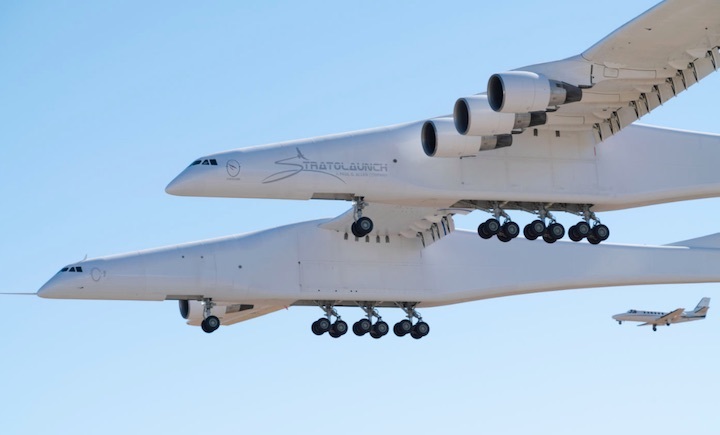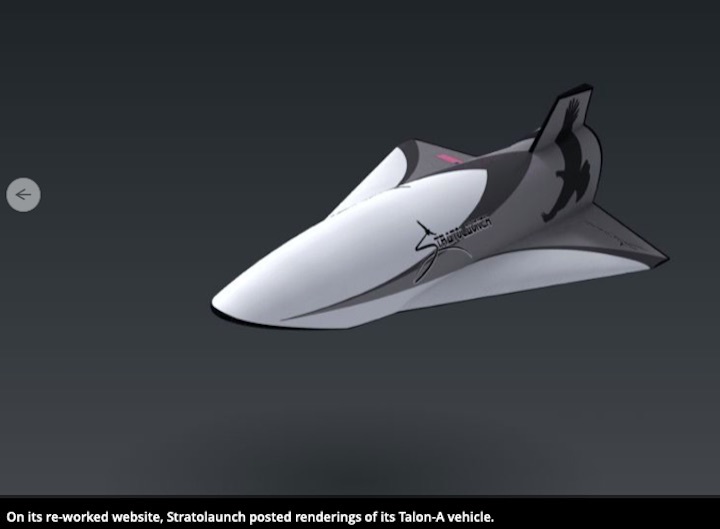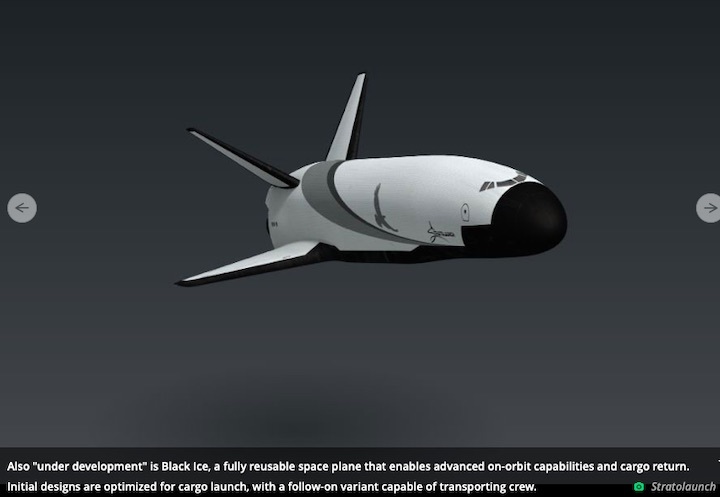2.04.2020

Nearly a decade ago, Microsoft co-founder Paul Allen founded Stratolaunch to build an aircraft capable of launching orbital rockets. At the time, the company's leadership included a host of luminous spaceflight officials, including former NASA chief Mike Griffin, who said the Stratolaunch aircraft “would make a very effective launcher."
Initially, the company planned to launch rockets built by SpaceX. But over time, the company's plans changed to fly Pegasus rockets built by Orbital ATK. Eventually, Stratolaunch dropped this idea and announced that it was developing its own line of rockets.
Alas, the aircraft never did prove to be an effective launcher. In fact, what became the world's largest airplane took flight just one time, in April, 2019. The Stratolaunch plane reached speeds above 300km/h and heights of 5km during its 150-minute test flight before landing safely at the Mojave Air and Space Port.
But the plane has been grounded since. And last summer, less than a year after Allen died in October, 2018, Stratolaunch effectively ceased operations. In recent months, however, the company has been rehiring employees, and this week it officially unveiled a new business plan—building and operating hypersonic test beds.
To facilitate this, the company released preliminary designs for "Talon-A," a reusable vehicle capable of reaching Mach 6. (Hypersonic flight is generally defined as speeds above Mach 5 through the atmosphere.) The company says its 8.5-meter-long Talon-A vehicle is a "flexible, high-speed testbed built for hypersonic research, experiments, and enabling operational missions." It is not clear when the Talon-A will be ready for flight.
Stratolaunch aims to provide customers with routine and repeatable access to the hypersonic environment for both "proprietary and classified" payloads. The company says that, because its 117-meter-wide aircraft is so large, it can accommodate three Talon vehicles at a time to support various operational scenarios.



"Our hypersonic testbeds will serve as a catalyst in sparking a renaissance in hypersonic technologies for our government, the commercial sector, and academia," said W. Jean Floyd, Stratolaunch's chief executive, in a statement.
This is an interesting, if not wholly unexpected, turn for Stratolaunch. During the last decade, the aerospace community has often collectively scratched its head, wondering how such a large aircraft could be cost-competitive in the hotly contested market to launch small- and medium-sized satellites. And without a dedicated rocket in existence, the company seemed little more than a vanity project for the wealthy Allen. If Stratolaunch served any purpose, the speculation went, it must be to meet some unspecified military need.
There can be no question that the military is interested in hypersonic technology. China, Russia, and the United States are all racing to develop hypersonic missiles, as well as new countermeasure technology as high-speed missiles threaten to penetrate most existing defenses. A Rand Corporation report from 2017 provides more basic information, suggesting, "There is probably less than a decade available to substantially hinder the potential proliferation of hypersonic missiles and associated technologies."
If the company succeeds in developing the Talon-A vehicle—and we probably should have some healthy skepticism given that this is about the fifth or sixth vehicle proposed to fly on the Stratolaunch aircraft—it has a chance to help the military both test hypersonic missiles and potentially mitigate against them.
Quelle: arsTechnica
